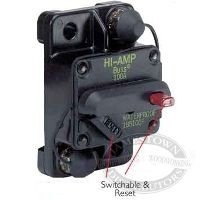One reason a large gauge wire and no fuse or fusible link is used is to keep the resistance and voltage drop down.
10 Awg wire is about 1 ohm per 1,000 ft, so if you had an internally regulated alternator putting out 14 volts at 100 amps through 20 feet of 10 awg wire battery or load at the end of the wire would only see.... 1ohm / 1000 is 0.001 ohms per foot. Times 20 feet is a total resistance of 0.020 ohms which does not seem like much, but at 100 amps (100 * 0.020) = 2 volt drop in the wire. The load or battery at the end would be 14 volts - 2 volts = 12 volts.
A 1/0 gauge wire has about 0.1 Ohm resistance per thousand feet. If you had 15 feet of the 0/1 awg wire to the engine compartment / starter, and only 5' of 10 awg from the alternator to the 1/0 wire, there would be much less voltage drop. The 5' of 10 awg would now drop 0.5 volts and the 15' of 1/0 would drop 0.15 volts, or 0.65 volts total, so 14.0 - 0.65 = 13.35 volts.
This is hypothetical. normally you would not have constant 100 amp loads, so the voltage drop would be much less, but it makes the math easier.
With a remote sense external voltage regulator, you could "sense" the voltage at the battery to have the alternator output more voltage.
















